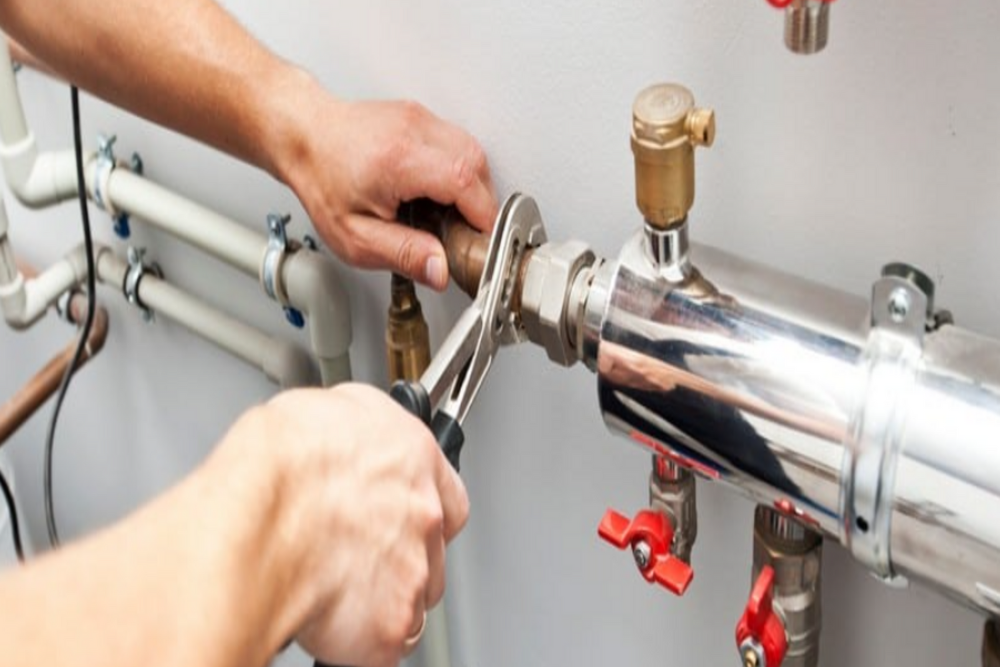Plumbing and electrical systems are the foundational elements of any residential, commercial, or industrial building. While they often remain hidden behind walls and beneath floors, these systems play a crucial role in ensuring comfort, safety, functionality, and efficiency. Whether it's delivering clean water, managing waste, lighting spaces, or powering appliances, plumbing and electrical infrastructure is essential to modern life.
This article provides a detailed look into Plumbing and Electricals systems, including their components, importance, installation, maintenance, safety standards, and innovations.
1. Understanding Plumbing Systems
1.1 Definition and Purpose
Plumbing refers to the system of pipes, fixtures, valves, and fittings installed in a building for the distribution of potable water and the removal of wastewater. It includes water supply systems, drainage systems, and gas piping.
1.2 Components of a Plumbing System
-
Water Supply Pipes – Transport clean water from a source to various outlets.
-
Fixtures and Faucets – Sinks, showers, toilets, and taps used by the occupants.
-
Drainage and Vent Systems – Carry away wastewater and prevent sewer gases from entering buildings.
-
Traps and Seals – Prevent sewer odors and insects from coming back through the drains.
-
Hot Water Systems – Include water heaters and boilers.
1.3 Common Plumbing Issues
-
Leaky faucets and pipes
-
Clogged drains and toilets
-
Low water pressure
-
Running toilets
-
Water heater problems
2. Exploring Electrical Systems
2.1 What is an Electrical System?
An electrical system comprises components that generate, transmit, distribute, and use electric power. It includes wiring, circuit breakers, outlets, switches, lighting, and sometimes renewable energy components like solar panels.
2.2 Main Components
-
Service Entrance and Panel Board – Where power enters a building and is distributed to circuits.
-
Circuit Wiring – Conducts electricity throughout the building.
-
Switches and Receptacles – Control and access points for electricity.
-
Lighting Systems – Interior and exterior lighting for visibility and ambiance.
-
Grounding and Bonding – Ensures safety from electrical faults.
2.3 Common Electrical Issues
-
Tripping breakers or blown fuses
-
Flickering or dim lights
-
Dead outlets
-
Overloaded circuits
-
Outdated wiring (e.g., aluminum or knob-and-tube wiring)
3. Installation Best Practices
3.1 For Plumbing
-
Use durable, code-approved materials such as PEX, copper, or CPVC.
-
Ensure proper pipe slope in drainage systems for optimal flow.
-
Isolate hot and cold water lines to prevent heat loss and condensation.
-
Test systems for leaks before closing walls or flooring.
3.2 For Electricals
-
Plan circuit loads and ensure balanced distribution.
-
Use GFCI (Ground Fault Circuit Interrupter) outlets in wet areas.
-
Install AFCI (Arc Fault Circuit Interrupter) breakers to prevent fire hazards.
-
Clearly label circuit breakers for ease of troubleshooting.
4. Maintenance and Safety Tips
4.1 Plumbing Maintenance
-
Regularly check for leaks and drips.
-
Flush water heaters to remove sediment.
-
Clean drain traps and use filters to prevent clogs.
-
Insulate exposed pipes to prevent freezing in cold weather.
4.2 Electrical Maintenance
-
Schedule periodic inspections by licensed electricians.
-
Avoid overloading power strips and outlets.
-
Replace damaged cords or exposed wires immediately.
-
Install smoke detectors and test them monthly.
5. Innovations in Plumbing and Electricals
5.1 Smart Plumbing
-
Leak detection sensors and smart shut-off valves
-
Touchless faucets and smart water heaters
-
Water-saving fixtures to promote sustainability
5.2 Smart Electrical Systems
-
Home automation for lighting, HVAC, and appliances
-
Smart meters for energy usage tracking
-
Integration with renewable energy systems like solar panels and battery storage
6. Regulatory Standards and Codes
Both plumbing and electrical work are governed by national and local building codes to ensure safety and efficiency.
-
Plumbing Codes – International Plumbing Code (IPC), Uniform Plumbing Code (UPC)
-
Electrical Codes – National Electrical Code (NEC), local amendments
-
Permit Requirements – Necessary for major repairs, new installations, or remodels
-
Professional Licensing – Only certified plumbers and electricians should perform complex tasks
7. Hiring the Right Professionals
When undertaking plumbing or electrical work, hiring a qualified professional is critical. Look for:
-
Proper licensing and insurance
-
Strong references and reviews
-
Transparent pricing and written estimates
-
Compliance with safety and code standards
Conclusion
Plumbing and electrical systems are not just hidden utilities—they are vital components that impact daily living, safety, and property value. Proper installation, regular maintenance, and timely upgrades ensure they perform efficiently and last for decades. As technology evolves, smart systems are making these infrastructures more intelligent and eco-friendly, enabling better control, energy efficiency, and sustainability.
Investing in quality plumbing and electrical solutions not only protects your property but also enhances comfort and convenience. Whether building a new home, remodeling, or simply maintaining what you have, understanding these systems is essential for informed decision-making and long-term peace of mind.



